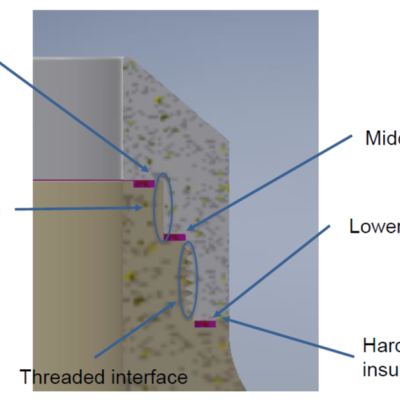The approach is to build a high voltage insulator consisting of two materials: Poly-Ether-Ether-Ketone (“PEEK”) and Machinable Ceramic (“MACOR”). PEEK has a high stress tolerance but cannot withstand high temperatures, while MACOR has high heat tolerance but is difficult to machine and can be brittle. MACOR is used for the plasma-facing surface, while PEEK will handle the…
Keywords
- (-) Show all (84)
- Imaging Systems (9)
- Photoconductive Semiconductor Switches (PCSS) (9)
- Semiconductors (7)
- Substrate Engraved Meta-Surface (SEMS) (7)
- Compact Space Telescopes (6)
- Diode Lasers (5)
- Optical Switches (5)
- Laser Materials Processing (4)
- Power Electronics (4)
- Precision Optical Finishing (4)
- Additive Manufacturing (3)
- Optical Damage Mitigation (3)
- RF Photonics (3)
- Sensors (3)
- Additively Manufactured (AM) Optics (2)
- Computing (2)
- Electric Grid (2)
- Fiber Lasers (2)
- Spectrometers (2)
- Ultrashort Pulse Lasers (2)


